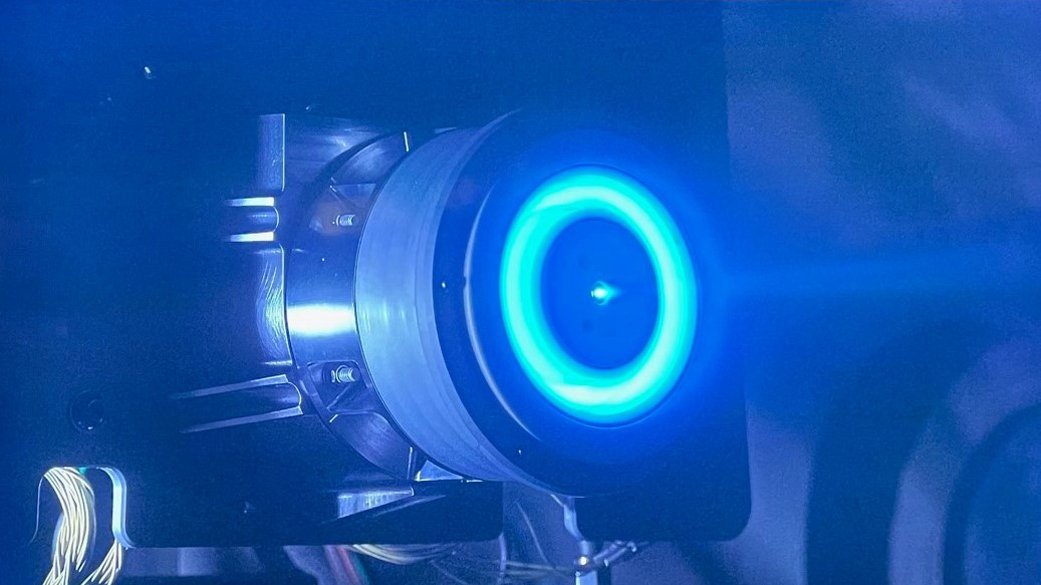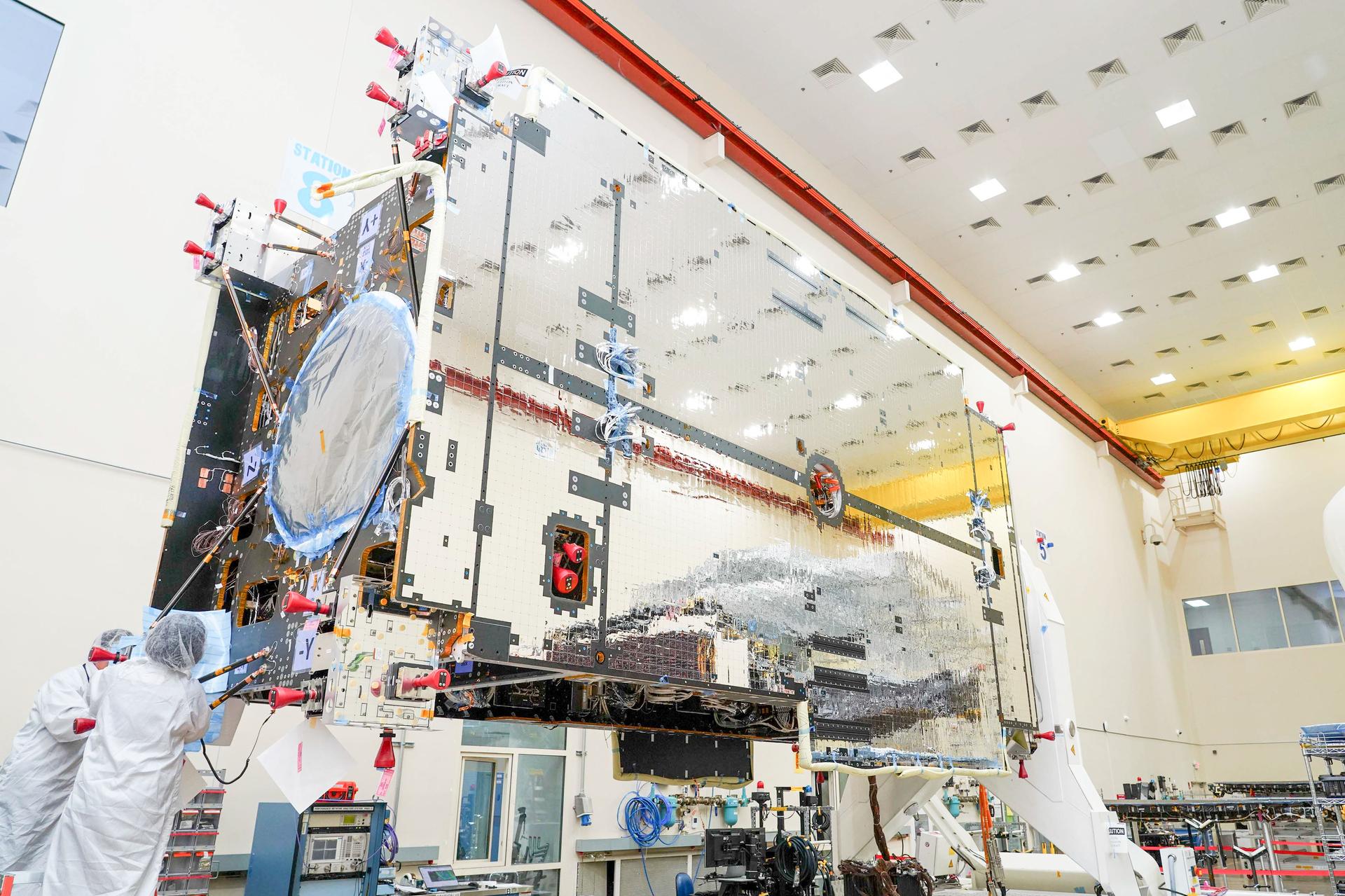The path to the Moon, Mars, and beyond will require a fleet of spacecraft in many different shapes and sizes, including everything from massive rockets that produce millions of pounds of thrust to pioneering small electric propulsion thrusters that fit in the palm of your hand.
For decades, innovators at NASA’s Glenn Research Center have been developing large, high-power electric propulsion (EP) systems that harness the power of the Sun to energize inert gases and turn them into extremely efficient thrust. Higher fuel efficiency means less propellant is needed, lowering launch costs while allowing spacecraft designers to reduce overall spacecraft weight to carry more payload mass, like technology demonstrations or more powerful scientific instruments.
The agency’s primary EP efforts have centered on large exploration and science missions, like the 7-kilowatt (kW) NEXT-C gridded-ion system currently flying on the Double Asteroid Redirection Test mission and the 12-kW Advanced Electric Propulsion System used on the Power and Propulsion Element for NASA’s lunar orbiting space station known as Gateway.
However, over the last five years, the Small Spacecraft Electric Propulsion (SSEP) project at NASA Glenn has been advancing high-performance sub-kilowatt (<1-kW) Hall-effect thruster and power processing technologies to enable smaller spacecraft. By utilizing smaller craft – those that could fit inside the trunk of your car versus being the size of your car – the agency opens more opportunities to conduct ambitious deep space missions at a fraction of the cost.
In collaboration with U.S. industry, SSEP has developed a lightweight thruster capable of propelling a small spacecraft from Earth to the Moon, Mars, and beyond – a step up from most existing low-power electric propulsion systems produced commercially for low-Earth orbit operations.
“Scaling down the size and power of Hall-effect thruster technologies, while retaining exceptional propulsive performance, has been a challenge,” says Gabriel Benavides, the lead engineer with the SSEP project at NASA Glenn. “It’s like asking a toy-sized car to drive across country with the same range and functionality of a full-sized passenger vehicle.”
Glenn researchers have been able to miniaturize key technologies to create the new thrusters. For example, the SSEP propulsion systems use an optimized magnetic field topology and center-mounted cathode, which were originally developed for advanced medium and high-power applications. Such technologies are key to achieving the performance, very long life, and fuel efficiency required for planetary missions.
Mission developers envision deploying small spacecraft for everything from a cluster of small, orbiting lunar communication satellites to relay data from Moon rovers and astronauts back to Earth, to deep space science missions to Venus, Mars, asteroids, and even the outer planets.
“Dozens of small spacecraft can fit inside the payload fairing of a single large chemical rocket launched into space,” explains Benavides. “Once deployed, they can each be self-propelled to different destinations of interest.”
While NASA looks to SSEP to self-propel small spacecraft into deep space, these technologies could be used for commercial needs closer to Earth. Commercial space-related applications include adjusting spacecraft in orbit, spacecraft servicing, and missions beyond low-Earth orbit to geosynchronous orbit or even the Moon.
Under a research license with Glenn, Northrop Grumman is using NASA’s design drawings, materials specifications, and test data to develop selected electric propulsion technologies for their customer satellite systems.
“Our partnership with NASA has been very successful in not only developing and testing this small electric propulsion technology, but in finding tangible applications for it,” said Mike Glogowski, Northrop Grumman Space Systems Fellow. “This new capability will enable extensive commercial near-Earth capabilities, including deployment and de-orbiting of small satellites in low-Earth orbit and station keeping and mission lifetime extension of satellites in geosynchronous orbit.”
The company is currently testing their own variant of the SSEP system in Glenn’s Electric Power and Propulsion Laboratory vacuum chambers over the next two years and hope to launch their first mission using this technology in 2024.
The SSEP project is jointly sponsored by Northrup Grumman, NASA’s Space Operations Mission Directorate, Space Technology Mission Directorate, and the Science Mission Directorate.
Nancy Smith Kilkenny
NASA Glenn Research Center



























